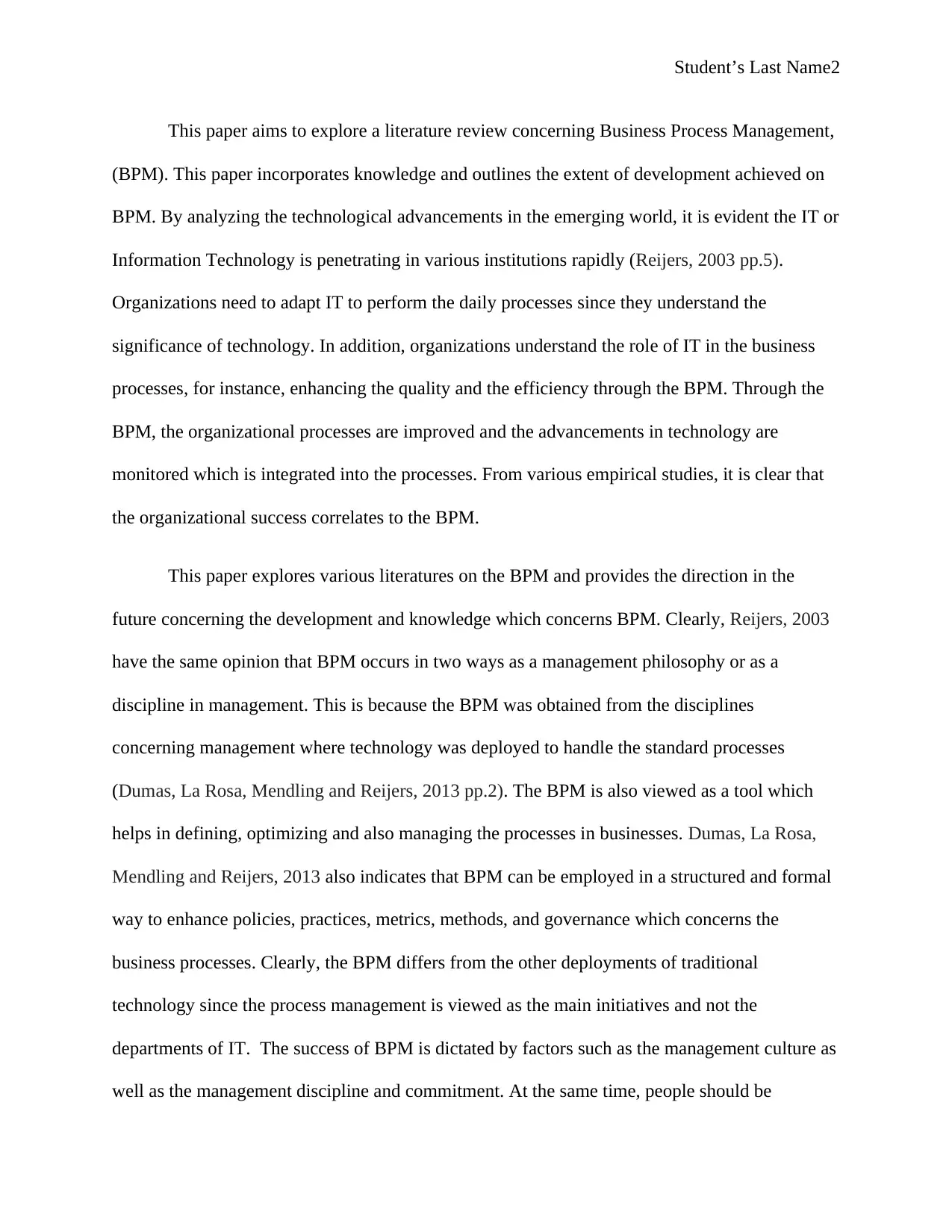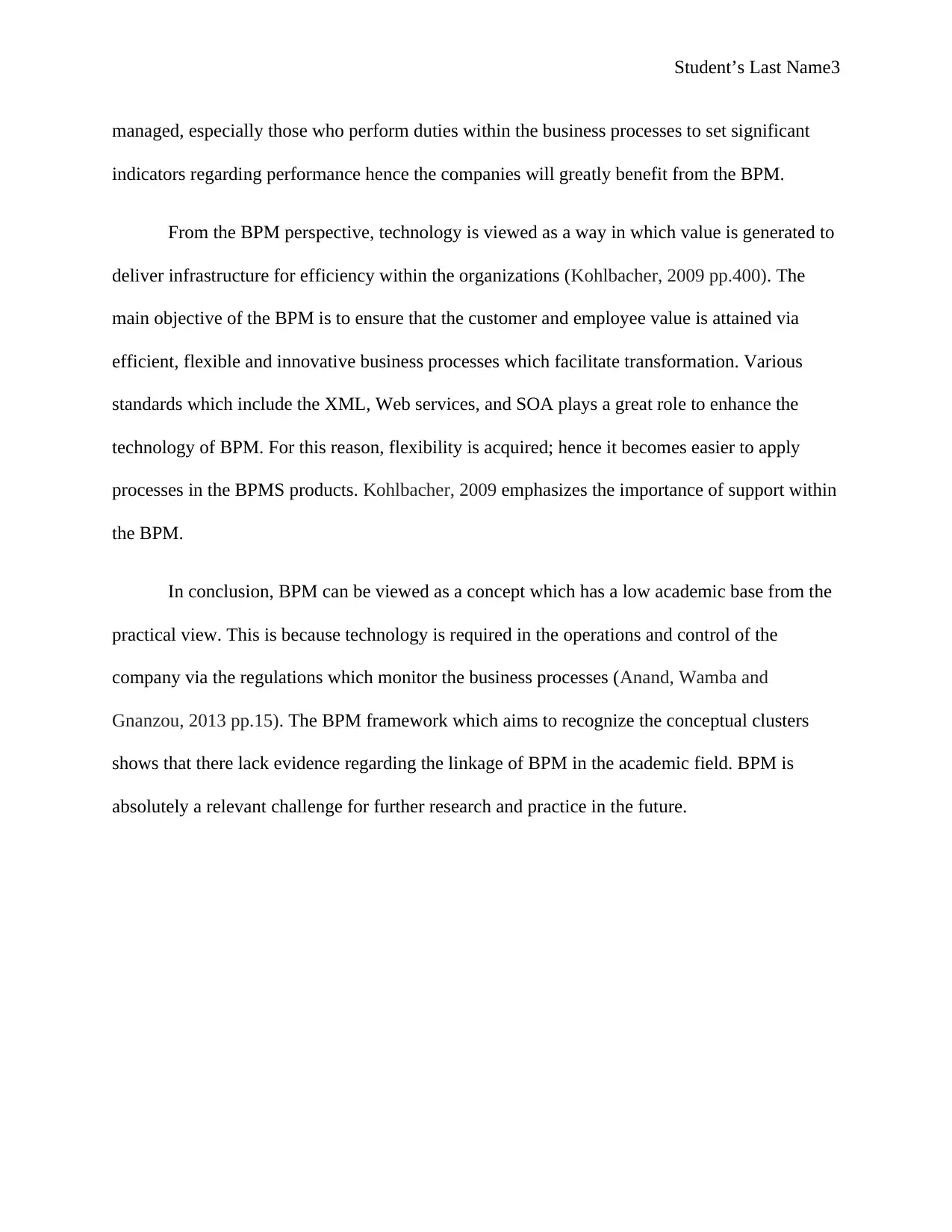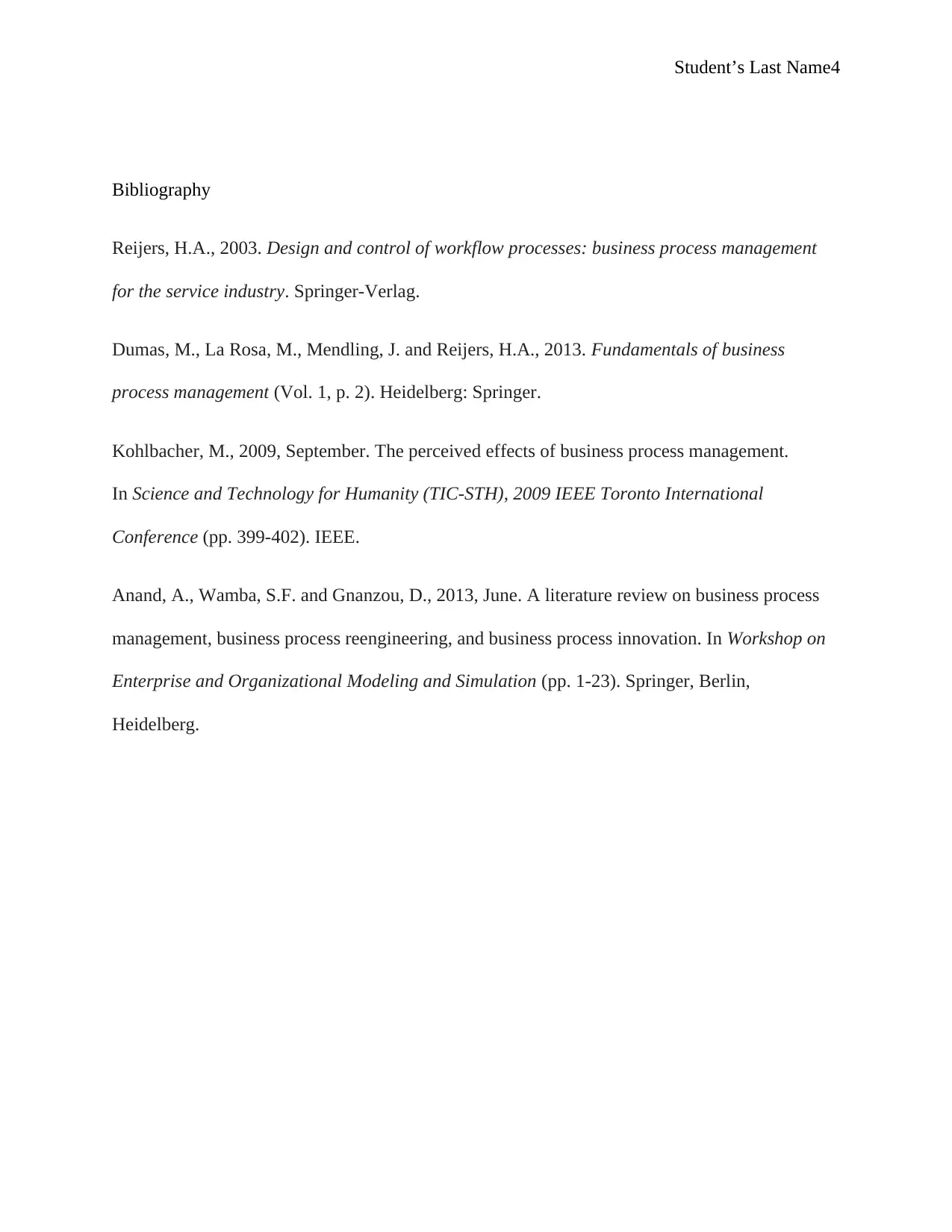Engineering Management: Business Process Management Literature Review
VerifiedAdded on 2020/03/07
|4
|760
|51
Report
AI Summary
This report presents a literature review focused on Business Process Management (BPM), examining the evolution and impact of IT within organizations. The paper emphasizes the increasing integration of IT to enhance efficiency and quality in daily processes. It highlights the correlation between BPM and organizational success, drawing on empirical studies and the perspectives of researchers like Reijers, Dumas, and Kohlbacher. The review discusses BPM as both a management philosophy and a discipline, as well as a tool for defining and managing business processes. It explores factors influencing BPM success, such as management culture and commitment, and the role of technology in delivering value and infrastructure. The report concludes by acknowledging the need for further research in BPM, particularly in linking academic concepts with practical applications and also considers the importance of standards like XML and SOA in enhancing BPM technology.
1 out of 4








![[object Object]](/_next/static/media/star-bottom.7253800d.svg)